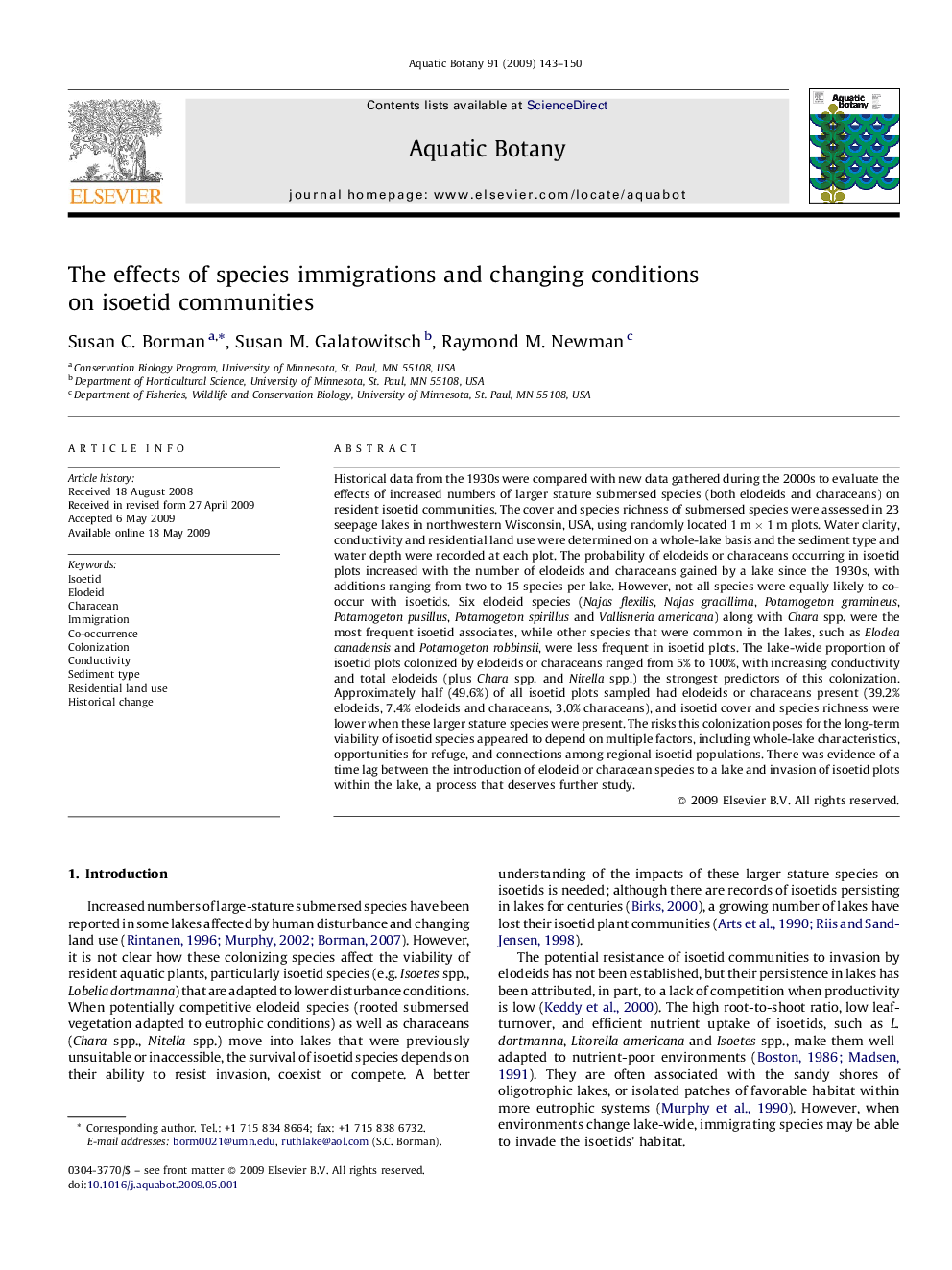| کد مقاله | کد نشریه | سال انتشار | مقاله انگلیسی | نسخه تمام متن |
|---|---|---|---|---|
| 4528260 | 1324296 | 2009 | 8 صفحه PDF | دانلود رایگان |

Historical data from the 1930s were compared with new data gathered during the 2000s to evaluate the effects of increased numbers of larger stature submersed species (both elodeids and characeans) on resident isoetid communities. The cover and species richness of submersed species were assessed in 23 seepage lakes in northwestern Wisconsin, USA, using randomly located 1 m × 1 m plots. Water clarity, conductivity and residential land use were determined on a whole-lake basis and the sediment type and water depth were recorded at each plot. The probability of elodeids or characeans occurring in isoetid plots increased with the number of elodeids and characeans gained by a lake since the 1930s, with additions ranging from two to 15 species per lake. However, not all species were equally likely to co-occur with isoetids. Six elodeid species (Najas flexilis, Najas gracillima, Potamogeton gramineus, Potamogeton pusillus, Potamogeton spirillus and Vallisneria americana) along with Chara spp. were the most frequent isoetid associates, while other species that were common in the lakes, such as Elodea canadensis and Potamogeton robbinsii, were less frequent in isoetid plots. The lake-wide proportion of isoetid plots colonized by elodeids or characeans ranged from 5% to 100%, with increasing conductivity and total elodeids (plus Chara spp. and Nitella spp.) the strongest predictors of this colonization. Approximately half (49.6%) of all isoetid plots sampled had elodeids or characeans present (39.2% elodeids, 7.4% elodeids and characeans, 3.0% characeans), and isoetid cover and species richness were lower when these larger stature species were present. The risks this colonization poses for the long-term viability of isoetid species appeared to depend on multiple factors, including whole-lake characteristics, opportunities for refuge, and connections among regional isoetid populations. There was evidence of a time lag between the introduction of elodeid or characean species to a lake and invasion of isoetid plots within the lake, a process that deserves further study.
Journal: Aquatic Botany - Volume 91, Issue 3, October 2009, Pages 143–150